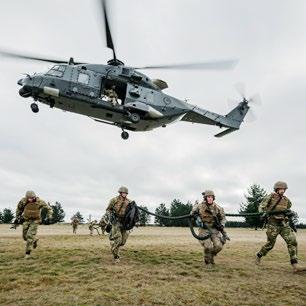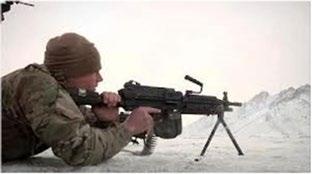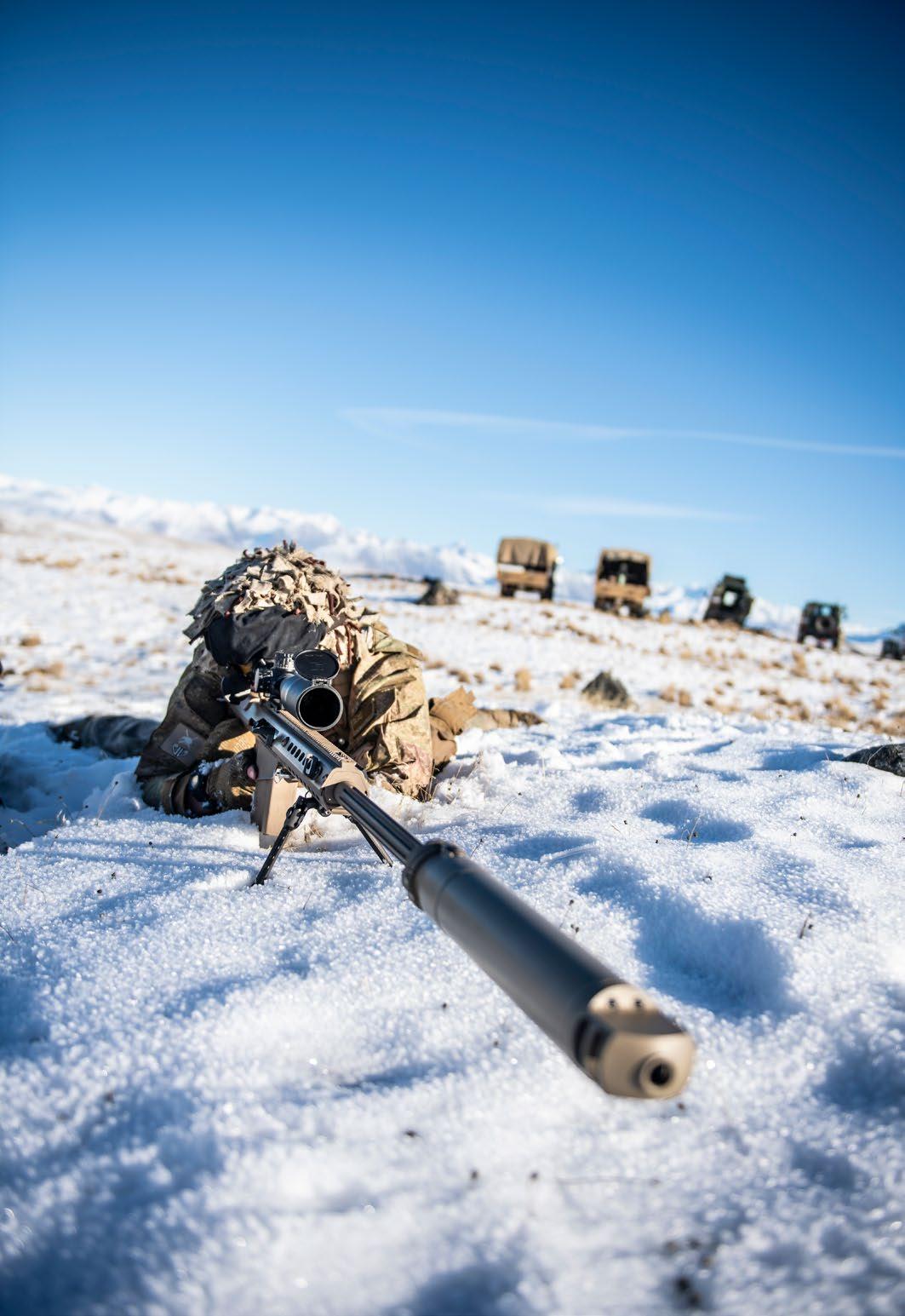
4 minute read
Fast roping in the 189

By Charlene Williamson
Advertisement
In late June, Delta Company, 2 nd /1 st Battalion, Royal New Zealand Infantry Regiment from Burnham Military Camp, conducted airmobile training with the Royal New Zealand Air Force NH90 Helicopters.
Delta Company, Officer Commanding Major Tim EwingJarvie said training such as this helps with enhanced mobility by integrating with joint assets.
“The skillset of fast-roping increases our agility by delivering highly-trained and well-equipped troops at precise times and locations.
“It allows us to rapidly respond to opportunities or threats within a dynamic operating environment,” he said.
MAJ Ewing-Jarvie said training activities such as these also serve as an opportunity to stay connected and co-ordinated with the Army’s Air Force colleagues. “While operationally important, these are the sorts of activities that many soldiers join to do.
“They contribute to a sense of quiet self-assuredness and the competitive mindset which distinguishes those in the profession of arms.”



The principle of the Army Health and Safety Policy is to take all reasonably practicable steps to prevent occupational accidents and illness from occurring and to reduce the possibility of harm to our personnel and to any other person who may be exposed to Army activities. Where an incident of harm occurs, reporting, investigation, and follow-up action is aimed at ensuring that the possibility of such an incident re-occurring from the same set of factors is eliminated or effectively managed for the future.
The Incident
A unit was conducting a Live Field Firing activity in the South Island. The activity were live firing fighting withdrawal drills using Individual Weapon (IW) and Light Support Weapon (LSW). Fire teams used the tactic to bound from firing positions as they moved back to a safe location. During one bound, the Range Conducting Officer (RCO) dislodged his own hearing protection covering his left ear. Rather than pausing to stop the practice and adjust his hearing protection, the RCO continued to oversee the activity. The RCO was located approximately 1–2 metres from the LSW during which time 200–300 rounds were fired from the weapon.

Facts
The activity was planned in accordance with approved procedures in Defence Force Orders for Army, DFO (A) Vol 7, Training. The RCO continued to monitor the activity after losing a seal of his hearing protection. The RCO experienced hearing difficulties and was diagnosed as having suffered acoustic trauma to his left ear consistent with short exposure to impulse noise. The RCO reported to the medical centre 4 days later.
Findings
Subsequent examinations showed there was evidence of permanent injury. Rather than pause the activity and readjust the hearing protection, the RCO let the live firing activity continue. Remedial training was implemented for the RCO and Safety Staff to prevent a similar incident occurring in the future. As a result of the incident, Lesson Learned were advised across the Land Component Command.
Conclusion: The discharge noise of modern weapon systems can cause considerable damage to unprotected eardrums.
Safety in training: To prevent noise induced hearing loss, the officer in charge of the practice, range conducting officers, safety supervisors, and person in charge, are to ensure that all personnel participating in blank and live firing activities are provided with the correct designated hearing protection. The ear cups of earmuffs are to be worn in direct contact with the skin and hair surrounding the ear. The earmuff and the hair and skin around the ear is not to be broken or interfered with at any time (for example – wearing the ear cup over head dress). Directing staff must also ensure that all personnel exposed to a hazardous noise event are informed of the hazards and reasons for adequate hearing protection. Also to be shown or reminded how to correctly fit and wear the required hearing protection prior to the activity commencing.
This case study is based on real events. Some details have been omitted to protect privacy.
COVID-19 LESSONS CONFERENCE 2020

A one day Covid-19 Lessons Learned Conference was held at Linton Military Camp earlier this month with nearly 150 personnel attending from the NZDF.
The conference, which was hosted by the Land Component Commander, focused on sharing lessons related to the pandemic at tactical and operational levels across the NZDF as well as from ABCANZ partners.
The content of the conference was presented by four live panels covering a spectrum of Covidrelated topics including historical lessons from prior pandemics, Joint lessons, and effects on training and operational outputs. Recorded presentations from the United States, United Kingdom, Canada, and Australia provided further lessons collaboration from the international lessons communities. Question and answer sessions followed each panel presentation and helped to further explore the various topics. The panel presentations as well as the question and answer sessions were recorded and the recordings will be uploaded and made available publicly so that all can benefit from the conference.
Before the conference lessons learned were submitted to the NZ Army’s Adaptive Warfighting Centre (AWC) and additional lessons learned were collected during the conference. AWC is analysing the information to identify trends and present information that can be considered and used by the Army. The Covid Lessons Conference 2020 gave attendees the opportunity to reflect on recent observations from the national lockdown, and allowed attendees to engage with the NZDF’s partners and allies, and learn from each other.
To view the recording visit www.kea-learning.nz
GETTING TO KNOW THE AMR Exercise Kleidi Pass


